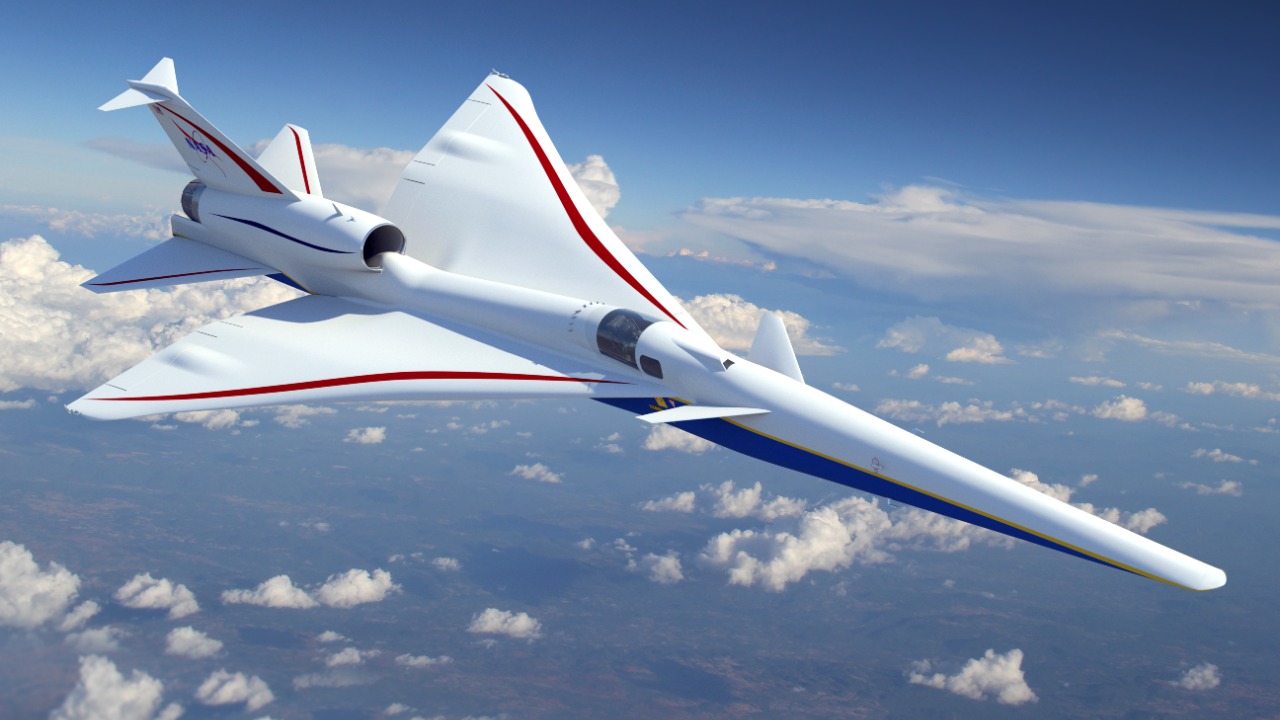
NASA’s X-59 supersonic jet has successfully completed its first flight, marking a significant stride towards quieter supersonic travel over land. This milestone, achieved under the Quesst mission, aims to transform the sonic boom associated with supersonic speeds into a softer “thump”. The X-59’s progress could potentially revive commercial supersonic aviation, which has been largely restricted due to noise regulations, and cut transatlantic travel times in half.
The X-59’s Successful Maiden Voyage
On October 29, 2025, the X-59 took to the skies for its first test flight. Video footage captured the jet’s stable ascent and landing, demonstrating the aircraft’s readiness for supersonic speeds. NASA confirmed the successful completion of the flight, emphasizing the X-59’s unique design features, such as its long, slender fuselage, which help minimize sonic disturbances.
Initial observations from the test flight were promising. The jet reached its target altitudes and speeds without any reported issues, setting the stage for further data analysis and paving the way for future tests.
Behind the X-59: NASA’s Quesst Mission Goals
The Quesst mission’s primary objective is to gather data on the perception of the sonic thump, a softer version of the sonic boom. This involves flyovers of volunteer communities to assess noise levels. The X-59, built in partnership with Lockheed Martin, incorporates advanced shaping to reshape shockwaves into a quieter sound profile. Pre-flight preparations included ground tests and taxi runs in September 2025, ensuring the jet was ready for its inaugural airborne trial.
Breaking the Sound Barrier Quietly
The X-59’s “quiet supersonic” technology is designed to produce a sonic thump no louder than a car door closing at 75 decibels. This is a significant reduction from the disruptive booms that led to the 1973 Concorde restrictions. The jet’s top speed capability of Mach 1.42 allows for supersonic flight without the disruptive boom that previously prohibited overland routes. The aircraft’s unique nose shape and lack of a forward cockpit window—replaced by external cameras—contribute to shaping airflow for reduced noise.
Revolutionizing Transatlantic Travel Times
The X-59 has the potential to halve flight durations on routes like New York to Paris. By enabling efficient supersonic cruising, the typical 7-8 hour journey could be reduced to under 4 hours. This could transform the economics of business and leisure travel by enabling same-day round trips across continents.
However, regulatory hurdles remain. The FAA will need to consider lifting the overland supersonic ban if noise data proves acceptable, a decision that could have far-reaching implications for the aviation industry.
From Concept to Liftoff: Development Milestones
The X-59’s journey from concept to liftoff has been marked by several key milestones. By July 2025, key engineering phases were completed, leading to flight readiness. Computational modeling and wind tunnel tests played a crucial role in validating the quiet boom design before the actual October 2025 flight. NASA also collaborated with international partners to ensure the technology meets global aviation standards for future commercialization.
Future Tests and the Path to Commercial Supersonic Flights
Looking ahead, NASA plans to conduct follow-up flights in 2026. These will include supersonic dashes to measure real-world sonic thump effects over populated areas. NASA will share X-59 data with regulators like the FAA, potentially leading to a revision of sonic boom rules by the late 2020s. This could impact the industry significantly, with companies like Boom Supersonic potentially adopting similar technology for passenger jets entering service in the 2030s.
More from MorningOverview